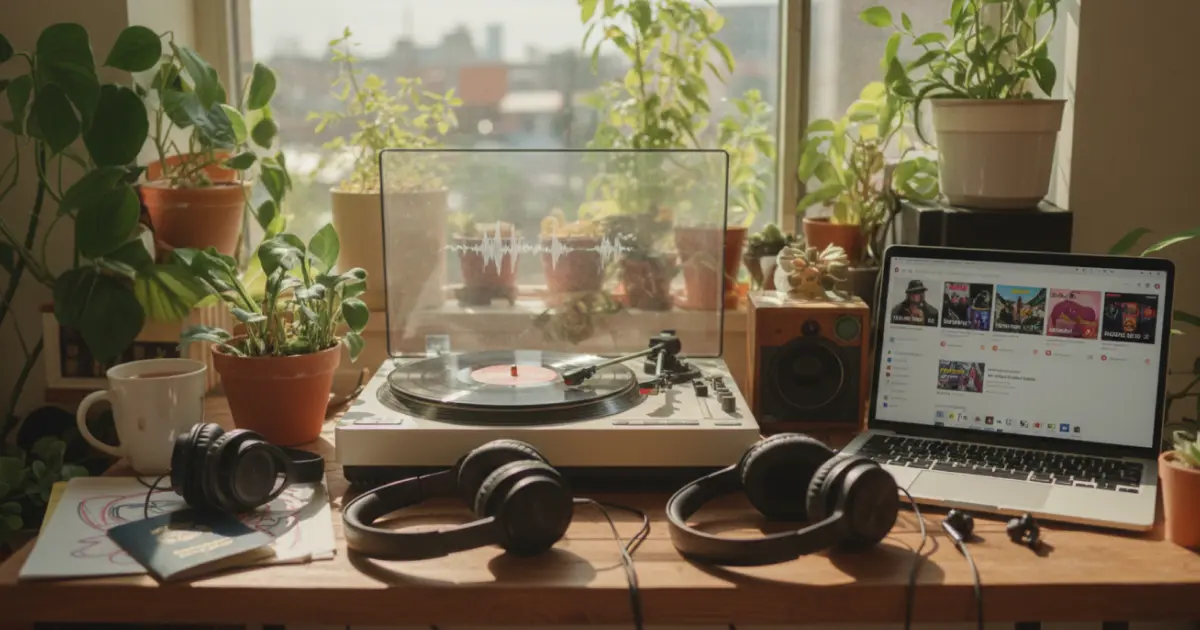Train your future design assistant: join Outlier’s Graphic Design project



What if AI could be your most teachable junior designer?
Think about mentoring a new designer: explaining why certain color combinations create tension, how negative space can guide the eye, or when to break typography rules for impact. Now imagine sitting down with that eager assistant and trying to explain why a particular ad layout feels just right. That's the challenge (and the fun) of Outlier's new graphic design project. We're inviting designers with a great eye and strong sense of aesthetics to help us train and evaluate AI models so that future creative tools align with the way you work.
Why Outlier needs Graphic Design experts
AI is already generating ads, social posts and other visuals, but it often lacks the nuance that comes from years of creative practice. Just as medical experts are vital for training healthcare models because AI still struggles with clinical nuance, design experts are essential for teaching AI what makes an image compelling. The demand for human expertise in training AI is growing and your perspective can help models learn to interpret composition, typography and style with the sensitivity only a designer has.
What you’ll do as a Graphic Design contributor
Our design-focused tasks are varied and hands‑on, giving you the chance to apply your craft while shaping the next generation of creative tools. Typical assignments include:
Curate high‑quality ad examples: select images and campaigns with strong composition, layout and typography so AI learns from the best.
Write detailed captions: describe the visual content, style, lighting and structure of ads to teach models how to “see.”
Edit layout scripts: refine natural‑language instructions that specify how text, banners and decorative elements should appear in a layout.
Review AI‑generated images: evaluate output for visual quality, alignment with prompts and overall design clarity, and give feedback to help improve future results.
Flexible, remote and meaningful projects
Outlier’s projects are built around flexibility and trust. Contributors work on a freelance contract, meaning you can log in at night after your client meetings. Whether you take on a few tasks a week or treat this as a part‑time opportunity, you’ll have control over your schedule.
AI as assistant, not replacement
Think of AI like Photoshop when it first emerged — a powerful tool that changed workflows but created more opportunities for designers, not fewer. AI lacks the strategic thinking, cultural understanding, and client relationship skills that define great design work. It can't navigate the subtle politics of a rebrand, understand why a logo needs to feel "more premium," or pivot a campaign concept based on a client's gut reaction.
What AI can do is handle the repetitive tasks that eat into your creative time — generating initial mockups, resizing assets, or producing variations on a theme. This frees you to focus on the high-level creative strategy, the client conversations, and the nuanced design decisions that truly matter. The designers thriving in this new landscape aren't fighting AI; they're learning to direct it, just like you learned to master every other tool in your creative arsenal.
Why it matters: building collaborative design assistants
You’re not just completing assignments; you’re pioneering the future of design. AI tools are becoming collaborators rather than replacements. Just as healthcare professionals guide models to enhance clinical workflows designers can ensure that AI‑generated visuals are tasteful, on‑brand and ethically sourced.
Ready to train your design assistant?
What if AI could be your most teachable junior designer?
Think about mentoring a new designer: explaining why certain color combinations create tension, how negative space can guide the eye, or when to break typography rules for impact. Now imagine sitting down with that eager assistant and trying to explain why a particular ad layout feels just right. That's the challenge (and the fun) of Outlier's new graphic design project. We're inviting designers with a great eye and strong sense of aesthetics to help us train and evaluate AI models so that future creative tools align with the way you work.
Why Outlier needs Graphic Design experts
AI is already generating ads, social posts and other visuals, but it often lacks the nuance that comes from years of creative practice. Just as medical experts are vital for training healthcare models because AI still struggles with clinical nuance, design experts are essential for teaching AI what makes an image compelling. The demand for human expertise in training AI is growing and your perspective can help models learn to interpret composition, typography and style with the sensitivity only a designer has.
What you’ll do as a Graphic Design contributor
Our design-focused tasks are varied and hands‑on, giving you the chance to apply your craft while shaping the next generation of creative tools. Typical assignments include:
Curate high‑quality ad examples: select images and campaigns with strong composition, layout and typography so AI learns from the best.
Write detailed captions: describe the visual content, style, lighting and structure of ads to teach models how to “see.”
Edit layout scripts: refine natural‑language instructions that specify how text, banners and decorative elements should appear in a layout.
Review AI‑generated images: evaluate output for visual quality, alignment with prompts and overall design clarity, and give feedback to help improve future results.
Flexible, remote and meaningful projects
Outlier’s projects are built around flexibility and trust. Contributors work on a freelance contract, meaning you can log in at night after your client meetings. Whether you take on a few tasks a week or treat this as a part‑time opportunity, you’ll have control over your schedule.
AI as assistant, not replacement
Think of AI like Photoshop when it first emerged — a powerful tool that changed workflows but created more opportunities for designers, not fewer. AI lacks the strategic thinking, cultural understanding, and client relationship skills that define great design work. It can't navigate the subtle politics of a rebrand, understand why a logo needs to feel "more premium," or pivot a campaign concept based on a client's gut reaction.
What AI can do is handle the repetitive tasks that eat into your creative time — generating initial mockups, resizing assets, or producing variations on a theme. This frees you to focus on the high-level creative strategy, the client conversations, and the nuanced design decisions that truly matter. The designers thriving in this new landscape aren't fighting AI; they're learning to direct it, just like you learned to master every other tool in your creative arsenal.
Why it matters: building collaborative design assistants
You’re not just completing assignments; you’re pioneering the future of design. AI tools are becoming collaborators rather than replacements. Just as healthcare professionals guide models to enhance clinical workflows designers can ensure that AI‑generated visuals are tasteful, on‑brand and ethically sourced.
Ready to train your design assistant?
Share this article on
Recent Blogs

Dec 24, 2025
How Outlier contributors are celebrating the holidays

Dec 24, 2025
How Outlier contributors are celebrating the holidays

Dec 24, 2025
How Outlier contributors are celebrating the holidays

Dec 15, 2025
The soundtrack of the Outlier community

Dec 15, 2025
The soundtrack of the Outlier community

Dec 15, 2025
The soundtrack of the Outlier community

Dec 10, 2025
Meet Justin, Aether’s $20,000 Grand Prize winner

Dec 10, 2025
Meet Justin, Aether’s $20,000 Grand Prize winner

Dec 10, 2025
Meet Justin, Aether’s $20,000 Grand Prize winner

powered by Scale AI
© 2025 Smart Ecosystems. All rights reserved.

powered by Scale AI
© 2025 Smart Ecosystems. All rights reserved.

powered by Scale AI
© 2025 Smart Ecosystems. All rights reserved.